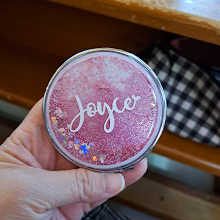Have you read my recent birth story? Now, I'd like to share about dealing with neonatal jaundice with the focus on prolonged jaundice which happened to both my sons.
What is neonatal jaundice?
Neonatal jaundice is a common condition in newborns. The newborn's skin and whites of the eyes become yellow due to too much bilirubin in the blood. Bilirubin is a yellow substance that the body creates when it replaces old red blood cells. The liver then helps break down this substance so it can be removed from the body in the stool (poop).
In newborns, bilirubin builds up at a rate faster (due to high turnover of red blood cells) than his liver can break it down, so jaundice happens. Also, a newborn's liver is under-developed and unable to remove enough bilirubin from the blood.
Types of jaundice
Physiological (normal) jaundice:
- happens to most full-term newborns because their liver is still maturing
- often appears at 2 to 4 days old and disappears by 1 to 2 weeks of age
Jaundice of prematurity:
- happens to premature babies (born before 37 weeks of gestation) because their bodies are less ready to excrete bilirubin effectively
Breastfeeding jaundice:
- happens when breastfeeding babies don't get enough breast milk due to difficulty with breastfeeding or because the mother's milk isn't in yet
Breast milk jaundice:
- happens in 1% to 2% of breastfed babies, caused by substances in breast milk that can make the bilirubin level rise and prevent the excretion of bilirubin through the intestines
- starts after the first 3 to 5 days and slowly improves over 3 to 12 weeks
Blood group (ABO) incompatibility:
- happens in babies whose mothers are blood type O, and who have a baby with type A, B, or AB
- ordinarily, the antibodies against the foreign blood types A and B that circulate in mother's bloodstream remain there, because they are of a type that is too large to pass easily across the placenta into the fetal circulation. Some fetal red cells always leak into mother's circulation across the placental barrier (mother and fetal blood theoretically do not mix, but in actuality, they do to a small degree)
- these fetal red cells stimulate the formation of a smaller type of anti-A or anti-B antibody which can pass into the baby's circulation and there cause the destruction of fetal red cells. The increased rate of destruction of red cells causes a subsequent increase in waste product production (bilirubin)
Treatment options
Based on bilirubin reading and newborn's age (in hours), see graph below.
My baby's jaundice story
My baby's serum bilirubin (SB) reading was 314 at day 7 (9am). He was admitted to NICU at Hospital Pantai Bangsar by noon and triple phototherapy (one biliblanket under baby plus two sets of photolights above baby) was conducted. However, the SB reading shot up to 340 (2:30pm). Our pediatrician asked us to get ready for exchange transfusion if the reading kept going up and past 360. O_O
We began to inform our family members, relatives, and some friends to pray for us and baby. Baby was put on drip to keep him hydrated and more settled under the lights. At 8pm, the number went down to 311, thus exchange transfusion was halted. Thank You Lord!
Hubby and I stayed at the prenatal ward as lodger. Good thing about Pantai Bangsar is that the prenatal ward and NICU are on the same floor and less than a minute walking distance. Throughout the day, I breastfed him every 2.5-3 hours. In between, I expressed my milk and passed the storage bottles to the NICU nurses. Same thing throughout midnight. I woke myself up to express milk and sent over to the nurses. It was not stressful as I have milk and I wasn't worried too much about this whole situation (well, except for the exchange transfusion scare).
The next morning, the reading went further down to 215. Woohoo! Baby was discharged (day 8) with the diagnosis NNJ (Neonatal Jaundice) ABO Incompatibility. Our pediatrician advised us to continue with home phototherapy.
Home phototherapy
We rented the Firefly home phototherapy machine (3D2N package) from https://www.facebook.com/hometherapyy/
We set the machine on the bed so that I could monitor baby's condition and it's also more convenient to breastfeed him.
On day 10, the SB reading was a nice 180.
What's next?
What can be done now - despite rebound jaundice - is to continue breastfeeding him and make sure he poops and pees well, and monitor his poop color. It must be seedy, mustard yellow breastmilk poop, NOT pale/chalky colored.
Learning from the past
Looking back three years ago, my elder son would have the ABO incompatibility issue as well (I'm O and both my sons are A). His condition was worsened by breastfeeding jaundice (because he had tongue-tie and I had mastitis, thus my milk supply was severely compromised, he couldn't feed well and had very low weight gain). Since his jaundice was prolonged till almost 8 weeks, it was diagnosed as breastmilk jaundice. You can read his story on my blog post about the first 4 weeks postpartum in 2013.
Now, my milk supply is adequate, so this second boy doesn't experience breastfeeding jaundice. He's still mildly jaundiced at 20 days young but I don't know his SB reading. If it's breastmilk jaundice, I know it will resolve on its own. The best course of action now is don't fret and just breastfeed him round the clock to make him poop and pee out the bilirubin faster.




























No comments